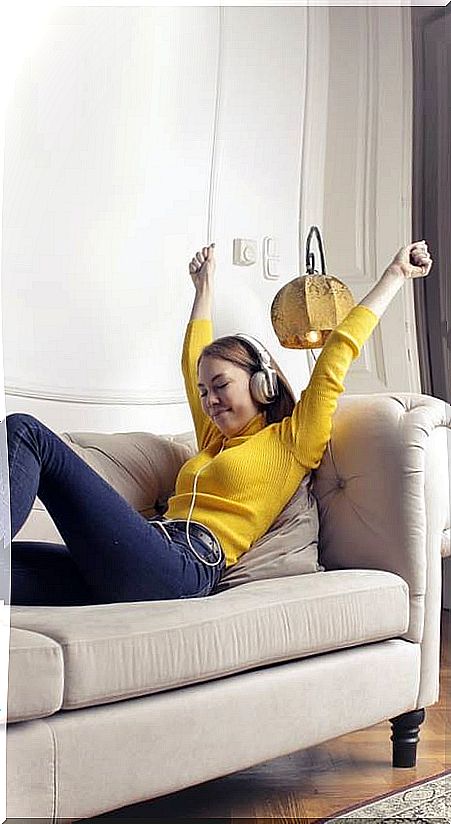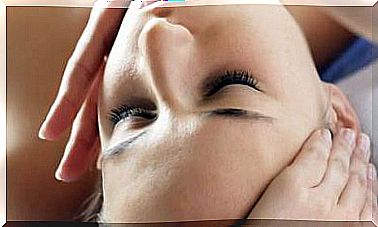How To Combat Anxiety With Binaural Beats
Binaural beats can act on brain wave patterns and promote relaxation. Studies show that they may also reduce pain. We explain how to experiment.

- What are binaural beats
- How they act on brain waves
- Binaural pulses to reduce anxiety and pain
- How to Play Binaural Beats
There are many relaxation techniques and one of the newest uses sound to help patients combat anxiety. Specifically, it is about listening to binaural pulses, a type of sound that directs a different frequency to each ear and that is capable of influencing the electrical waves that dominate the brain.
What are binaural beats
To begin with, it helps to know that the left and right ears receive slightly different frequencies, but that the brain registers them as a single sound. This difference in perception is what allows us to locate the origin of a sound in space.
What the binaural pulse technique does is use the difference to create the illusion of a third sound that we are not aware of. For example, if your left ear receives a frequency of 100 Hz and your right ear receives a frequency of 90 Hz, the brain perceives a binaural pulse of 10 Hz.
How they act on brain waves
What we are interested in knowing is that this binaural pulse can influence brain wave patterns that correspond to different states of mind, concentration and consciousness. This influence would occur through the phenomenon of synchronization, whereby two rhythms or oscillations tend to keep pace due to an exchange of energy between them. This phenomenon explains why two pendulum clocks that are hung next to each other end up oscillating in the same way.
Similarly, when the brain receives a binaural pulse at a certain frequency, the neurons will hypothetically tend to synchronize with that frequency. In this way, it would be possible to create sounds and music that reduce anxiety and promote sleep, or enhance alertness and creativity.
Binaural pulses to reduce anxiety and pain
Several studies show the potential benefits of binaural beats. They can, for example, reduce anxiety before a surgical or dental intervention (like this and this one). An investigation by the National University of Education at Distanca found that a binaural impulse with a frequency of 5 Hz could improve memory (retention of words). And a work published in Alternative Therapies in Health and Medicine shows that a frequency of 4 Hz (applying 256 Hz in one ear and 260 Hz in the other) reduces the dose of morphine needed after a knee transplant.
Despite this scientific work, critics point out that it is not possible to separate the effect of binaural beats from other factors such as the expectations or perceptions of the people participating in the studies. They suggest that the observed effects could also occur with other sounds, music, or relaxation techniques.
How to Play Binaural Beats
However, anyone can see for themselves how binaural beats affect them. To carry out a session you only need good headphones and half an hour of tranquility in a place without distractions. You don’t have to close your eyes, although a lot of people do. You can take advantage of it to meditate or you can use it as a preparation for sleep.
You can find binaural beats on CDs, online music stores or you can even create them yourself. The free Gnaural program, available for all desktop and Android operating systems, lets you play with the frequencies and add “white noise”. Remember that the key is in the frequency difference between one ear and another.
- Delta waves: binaural pulses in the delta pattern operate at a frequency of 0.5 to 4 Hz, which is related to deep sleep
- Theta waves: Practitioners establish binaural pulses in the theta pattern at a frequency of 4 to 7 Hz that helps improve meditation and creativity.
- Alpha Waves: Binaural pulses in the alpha pattern have a frequency of 7 to 13 Hz and can stimulate relaxation.
- Beta waves: Binaural pulses in the beta pattern have a frequency of 13 to 30 Hz. This frequency range can help promote concentration and alertness. However, it can also increase anxiety at the higher end of the range.
- Gamma waves: This frequency pattern represents a range of 30–50 Hz, which promote excitation.
Some people find that anxiety subsides the first time they hear the binaural pulse, while others may need to listen to it for a longer time. If after three weeks there is no change, it can be tried at a different frequency.
Research on the properties of binaural beats is in its infancy. Although they seem safe, as a precaution they are not recommended for people who have had seizures, have a pacemaker, or have heart problems.
Scientific references:
- D. Laws et al. A prospective, randomized, controlled study examining binaural beat audio and pre ‐ operative anxiety in patients undergoing general anesthesia for day case surgery. Anesthesia.
- Miguel García Argibay et al. Efficacy of binaural auditory beats in cognition, anxiety, and pain perception: a meta-analysis. Psychology Research.
- Miguel García Argibay et al. Binaural auditory beats affect long-term memory. Psychology Research.
- BK Isik et al. Binaural beats or 432 Hz music? which method is more effective for reducing preoperative dental anxiety? Oral Medicine, Oral Pathology, Oral Surgery.
- Francesco Tomaiuolo et al. Binaural Beats Reduce Postoperative Morphine Consumption in Older adults After Total Knee Replacement Surgery. Alternative Therapies in Health and Medicine.








